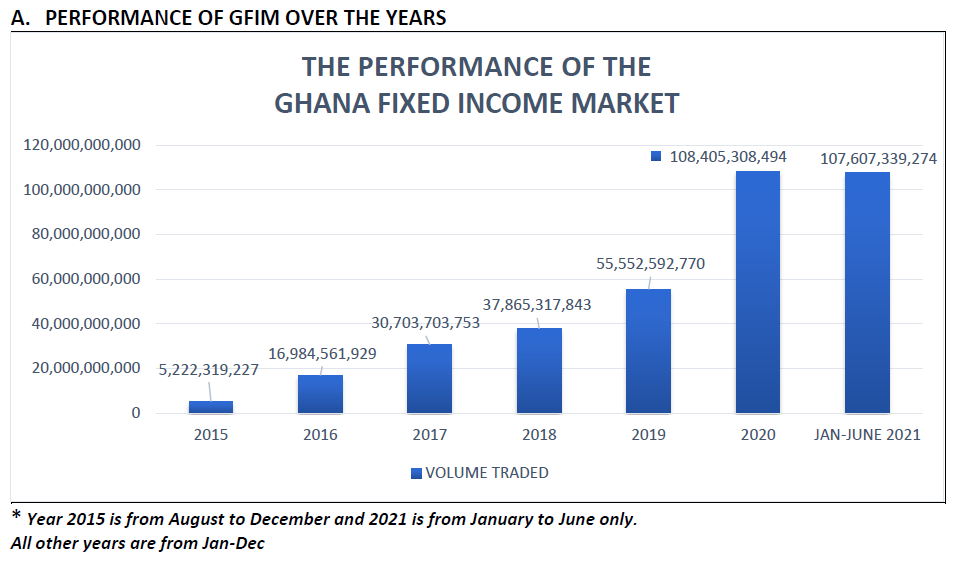The Ghana Fixed Income Market (GFIM) continued it bull run in June 2021 as trading activity shows consistent growth month on month, data from the Ghana Stock Exchange has shown.
The data, which summarized market activities in June 2021, shows that volumes traded on GFIM increased by 10.63 percent to 18.2 billion, valued at GH¢19.29 billion from trade volumes of 16.45 billion, value at GH¢17.18 billion, made in May 2021.
Cumulatively, from January to June 2021, volumes traded on the market were about 107.61 billion, valued at GH¢111.79 billion. Trades during the month was about 120.93 percent higher than the same period in 2020.

Given the current trend on the secondary market, trading in 2021 will far exceed the levels saw in 2020 due to the size of issuances that has been done so far, in addition to the size of capital that has flooded the market this year.
Although the market has proven strong liquidity, market analyst with FINCAP Securities, John Nani noted that the market experienced a pullback of liquidity, as investors anticipate the issuance of securities in the mid-range of the curve.
“With the government scheduled to issue GH¢1.8 billion worth of 2-year tenured bonds and GH¢1.8 billion worth of 10-year tenured bonds, it seems market players are holding on to liquidity with the hope of acquiring these papers when they are issued,” Mr. Nani said in an interview with B&FT.
He also noted that given the current situation where the central bank is staying off the open market operation, the market is keenly anticipating an increase in the rates.
Government securities looked more attractive and continue to dominate the market as its shares of the outstanding securities increased to 82.71 percent in June 2021 from 78.63 percent in the same period last year, whereas the corporate share dipped from 21.37 percent in June 2020 to 17.28 percent in June 2021.
The economy appears to have endured the impact of the COVID 19 comparatively well so far but there were some associated challenges such as the slower growth in credit to the private sector, due to the heightened risk aversion of investors.
Courage Kingsley Martey, a senior analyst with Databank in an interview with B&FT explained that the crowding-out effect is both the result of too much borrowing by the government and the unwillingness of commercial banks to lend to the private sector.
“As it stands, it appears likely that even if government slows down its borrowing or even lower the yields on Treasury securities – as we have seen on the market – commercial banks are less likely to aggressively push up their loan book. The banks are currently cautious and concerned about the elevated credit risk. And so, would continue to deploy capital to reduce the risk exposure,” Mr. Martey said.
“This means that banks willingness to lend is also worth considering in the argument around crowding out effect of government borrowing,” he added.
Market analysts also predict that yields will remain below 20 percent across the curve this year as the government continues to manage its cost of borrowing.










